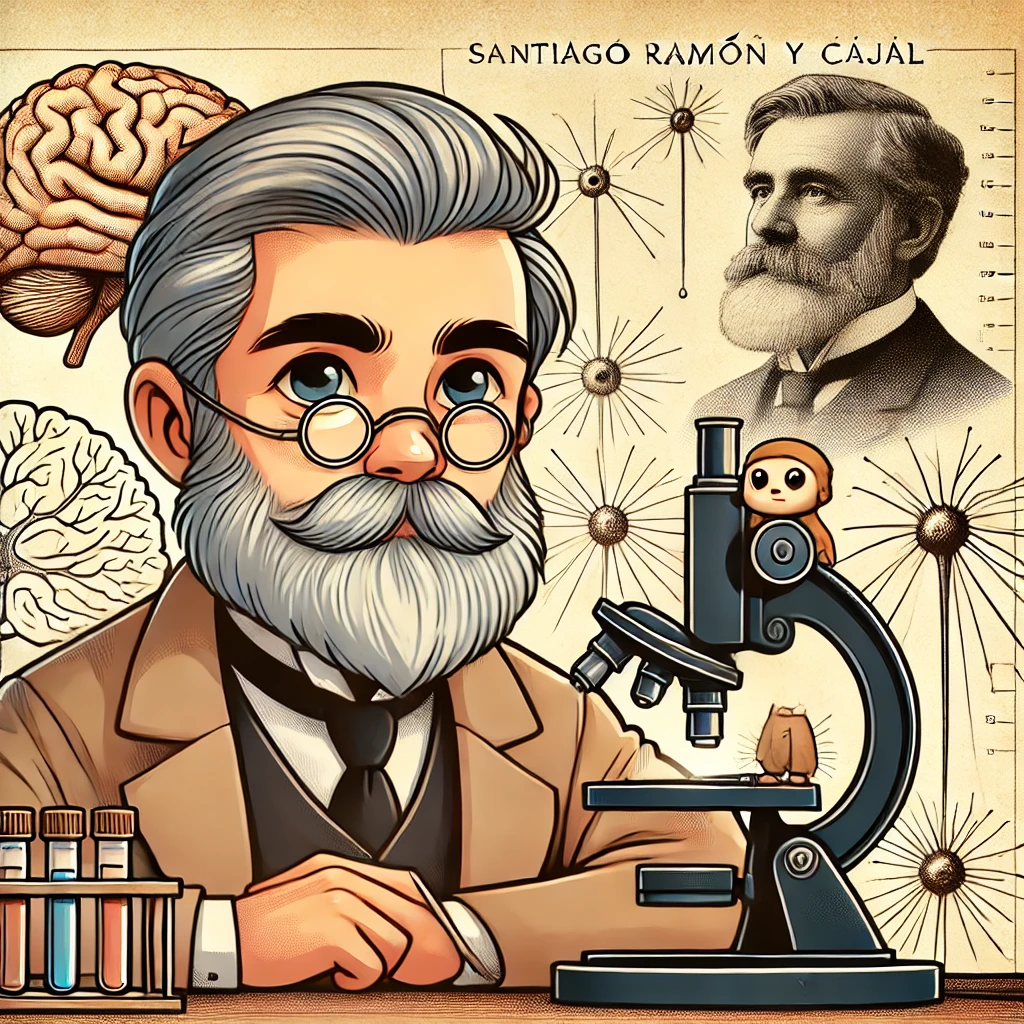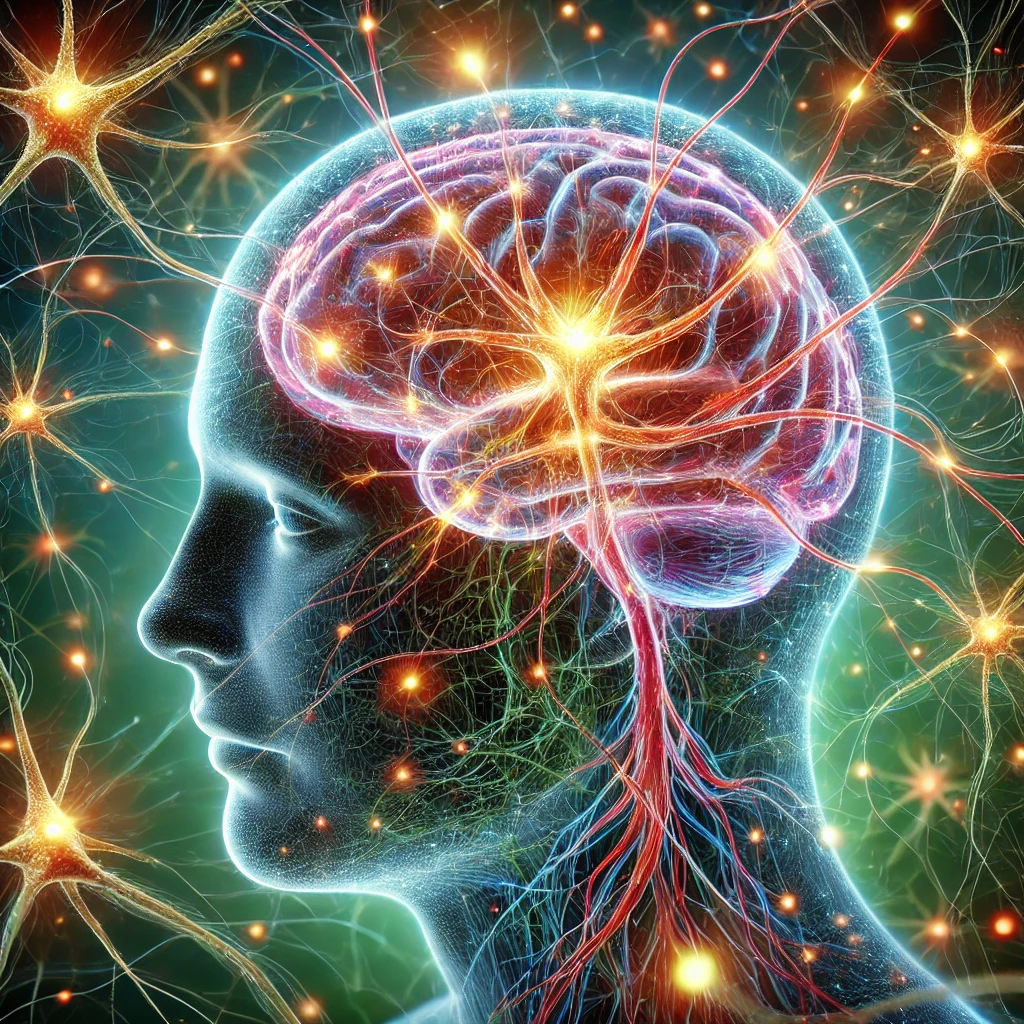Neuroscience is the scientific study of the nervous system, particularly focusing on the brain and how it affects behavior, cognition, emotions, and bodily functions. It explores how neurons (nerve cells) communicate, how brain circuits work, and how these processes underlie perception, memory, movement, and decision-making.
Neuroscience is a multidisciplinary field, combining elements of biology, psychology, chemistry, physics, and computer science to understand brain function and address disorders like Alzheimer’s, Parkinson’s, and depression. It also encompasses subfields like cognitive neuroscience (how the brain enables thinking and awareness) and neurobiology (the biology of the nervous system).
Neuroscience works by studying the structure and function of the nervous system, primarily focusing on how the brain and neurons communicate to control the body and mind. Here’s how it works on different levels:
- Cellular Level (Neurons): Neurons are the fundamental units of the brain and nervous system. They communicate through electrical impulses (action potentials) and chemical signals (neurotransmitters). Neuroscientists study how neurons process and transmit information, forming networks that support learning, memory, and behavior.
- Synaptic Communication: Neurons communicate with each other at synapses, where neurotransmitters are released and received by neighboring cells. This communication is essential for everything from basic reflexes to complex thoughts.
- Brain Circuits: Groups of neurons form circuits that are responsible for specific functions like processing visual information, controlling movement, or regulating emotions. Neuroscientists map these circuits to understand how different parts of the brain work together.
- Cognitive and Behavioral Level: Cognitive neuroscience studies how brain activity relates to mental processes like perception, memory, decision-making, and language. By using techniques like brain imaging (fMRI, EEG), scientists observe which parts of the brain are activated during various tasks.
- Studying Disorders: Neuroscientists also investigate how brain diseases (like Alzheimer’s, Parkinson’s, or mental health conditions) disrupt normal brain function. This helps develop treatments or therapies that restore normal brain activity.
In essence, neuroscience integrates multiple levels—from molecules and neurons to behavior and cognition—to understand how the brain works.

The father of neuroscience is Santiago Ramón y Cajal, a Spanish neuroscientist who made groundbreaking contributions to understanding the structure and function of the nervous system.
Key Contributions of Ramón y Cajal:
- Neuron Doctrine: Before Cajal’s work, scientists believed that the brain was a continuous network of connected tissue. Cajal demonstrated that the nervous system is made up of discrete, individual cells called neurons. This concept, known as the Neuron Doctrine, is fundamental to modern neuroscience.
- Neuroanatomy: Cajal used a staining method developed by Camillo Golgi (the Golgi stain) to visualize individual neurons under a microscope. His detailed drawings of neurons, axons, and dendrites illustrated how these cells are distinct and connected by synapses rather than fused together.
- Synaptic Transmission: Cajal proposed that neurons communicate with each other via specialized junctions called synapses, and information flows in one direction—from the axon of one neuron to the dendrite of another. This idea formed the basis for understanding how neural circuits process information.
- Plasticity: He also suggested that the brain is not static but can adapt and change through a process called neural plasticity. This was a revolutionary idea for its time and is now a key concept in understanding learning, memory, and recovery from brain injuries.
For his remarkable contributions, Ramón y Cajal was awarded the Nobel Prize in Physiology or Medicine in 1906, shared with Camillo Golgi. His work laid the foundation for modern neuroscience, earning him the title of the “father of neuroscience.”
Neurons connect throughout the body to form an intricate communication network between the brain, spinal cord, and various body parts. This network is responsible for relaying signals that control movement, sensation, and many vital processes. Here’s how neurons are connected in different parts of the body:
- Sensory Neurons
Function: Carry information from sensory organs (skin, eyes, ears, etc.) to the central nervous system (CNS), which consists of the brain and spinal cord.
Location: Found in sensory organs and skin. For example, if you touch something hot, sensory neurons in the skin send signals to the spinal cord and brain.
- Motor Neurons
Function: Transmit signals from the CNS to muscles and glands, controlling voluntary and involuntary actions like movement, breathing, and reflexes.
Location: Found in the spinal cord and extend to muscles throughout the body. For instance, motor neurons signal muscles in your hand to contract when you pick up an object.
- Interneurons
Function: Act as intermediaries, connecting sensory and motor neurons within the CNS. They help process information and coordinate responses.
Location: Primarily found in the brain and spinal cord. They are essential for complex processes like learning and decision-making.
- Autonomic Neurons (Sympathetic and Parasympathetic)
Function: Regulate involuntary functions, like heart rate, digestion, and respiratory rate.
Sympathetic Neurons: Prepare the body for “fight or flight” responses (e.g., increasing heart rate).
Parasympathetic Neurons: Promote “rest and digest” responses (e.g., slowing down heart rate).
Location: Found in organs, glands, and smooth muscles. For instance, neurons in the stomach control digestive activity.
How They Connect:
Nerves: Neurons are bundled into structures called nerves that extend throughout the body, carrying signals between the CNS and various body parts.
Synapses: Neurons communicate with each other and with muscles or glands through synapses, where neurotransmitters are released to carry the signal across a small gap to the next cell.
Reflex Arcs: In some cases, like reflexes, signals bypass the brain and are processed directly in the spinal cord. This allows for faster reactions to stimuli (e.g., pulling your hand away from a hot surface).
Together, this neural network allows for rapid communication, ensuring the body can respond appropriately to stimuli and carry out various functions.
Neuronal disorders, or neurological disorders, occur when the structure or function of neurons (nerve cells) is disrupted, leading to problems in how the nervous system functions. These disorders can affect the brain, spinal cord, and peripheral nerves, impacting movement, sensation, cognition, and other bodily functions. There are many types of neuron-related disorders, each affecting the nervous system differently. Here are some common types:
- Neurodegenerative Disorders
Alzheimer’s Disease: A progressive disorder that leads to the degeneration of neurons, particularly those involved in memory and cognition. It causes memory loss, confusion, and eventually, an inability to carry out daily activities.
Parkinson’s Disease: Characterized by the death of neurons in the brain that produce dopamine, leading to motor control problems such as tremors, stiffness, and difficulty with movement.
Amyotrophic Lateral Sclerosis (ALS): Affects motor neurons, leading to muscle weakness and atrophy, eventually causing paralysis as motor neurons die.
- Demyelinating Disorders
Multiple Sclerosis (MS): Involves damage to the myelin sheath, the protective covering around neurons, which disrupts nerve signal transmission. Symptoms include muscle weakness, coordination issues, vision problems, and fatigue.
- Neuromuscular Disorders
Muscular Dystrophy: A group of genetic disorders that cause progressive muscle weakness and loss of muscle mass due to problems with the neurons that control muscles.
Myasthenia Gravis: An autoimmune disorder that interferes with the transmission of signals from motor neurons to muscles, leading to muscle weakness and fatigue.
- Seizure Disorders
Epilepsy: A disorder characterized by recurrent, unprovoked seizures due to abnormal electrical activity in the brain. Neurons in the brain become hyperactive, causing symptoms like convulsions, loss of consciousness, or abnormal sensations.
- Mental Health Disorders (Neurochemical Imbalances)
Depression: Thought to be associated with imbalances in neurotransmitters like serotonin, dopamine, and norepinephrine, affecting mood, energy, and sleep patterns.
Schizophrenia: A complex disorder that affects how a person thinks, feels, and behaves, possibly due to abnormal neuron connections and chemical imbalances in the brain.
- Infectious and Autoimmune Disorders
Meningitis: An infection that causes inflammation of the membranes surrounding the brain and spinal cord, leading to neuron damage if untreated.
Guillain-Barré Syndrome: An autoimmune disorder where the immune system attacks peripheral nerves, causing muscle weakness and sometimes paralysis.
- Traumatic Disorders
Traumatic Brain Injury (TBI): Results from an injury to the brain that damages neurons and their connections, leading to cognitive, physical, and emotional impairments.
Spinal Cord Injury: Damage to the spinal cord neurons can result in loss of function or sensation below the site of injury.
- Peripheral Neuropathy
Diabetic Neuropathy: A complication of diabetes where high blood sugar levels damage peripheral nerves, causing numbness, tingling, pain, or weakness in the limbs.
Carpal Tunnel Syndrome: Compression of the median nerve in the wrist, causing pain, numbness, and weakness in the hand and arm.
Causes of Neuronal Disorders:
Genetic mutations: Many neurological disorders, like Huntington’s or Muscular Dystrophy, are caused by inherited genetic mutations.
Infections: Bacterial or viral infections can cause inflammation or damage to neurons (e.g., meningitis).
Autoimmune reactions: Disorders like multiple sclerosis or Guillain-Barré syndrome are caused by the body’s immune system attacking neurons or their protective coverings.
Toxins: Exposure to certain toxins (e.g., heavy metals or alcohol) can damage neurons.
Trauma: Physical injuries to the brain or spinal cord can disrupt neural function.
Neuronal disorders vary widely in their causes and symptoms, but all involve some form of disruption to the normal functioning of neurons and the nervous system.
Recent neuroscience studies in 2024 are pushing boundaries in multiple areas. One major development is in neuroimaging and brain mapping. Researchers have created a new technology that allows for high-resolution mapping of human brain tissue, giving unprecedented detail about neuron loss and changes in diseases like Alzheimer’s. This technique can also be applied to other organs, offering potential for new therapies across various medical fields.
Another breakthrough involves Parkinson’s disease. A new molecule, ophthalmate, has been shown to outperform traditional treatments like L-DOPA. This discovery opens new possibilities for treating movement disorders through pathways other than dopamine, potentially revolutionizing Parkinson’s management.
On a broader scale, advances in neuroplasticity, brain-computer interfaces (BCIs), and AI integration in neuroscience are reshaping how we understand and interact with the brain. Neuroplasticity research is focusing on ways to enhance brain health, especially in aging populations, while BCIs are offering new methods to monitor and manipulate brain activity, with potential applications in both healthcare and cognitive enhancement.
These trends show that neuroscience in 2024 is evolving rapidly, with interdisciplinary collaborations driving innovations that have the potential to transform both brain research and clinical practices.

Achieving balance in neurons is crucial for maintaining proper brain function and overall neurological health. The nervous system relies on the fine-tuned communication between neurons to regulate processes such as movement, cognition, and emotion. Imbalances in neural activity, whether due to over-excitation, lack of neurotransmitter production, or damage to synapses, can lead to neurological disorders like epilepsy, Parkinson’s, or depression.
Promoting balance involves multiple strategies, such as enhancing neuroplasticity—the brain’s ability to reorganize itself by forming new connections. This can be supported through lifestyle changes like physical exercise, mental stimulation, and proper sleep, which have been shown to boost cognitive resilience and neuron health. Additionally, neurotransmitter regulation through medication (e.g., for mood disorders) and advanced treatments like brain-computer interfaces and neurostimulation can help restore equilibrium in neural networks.
Ultimately, maintaining neural balance requires a combination of scientific advancements, healthy lifestyle practices, and individualized medical treatments, with ongoing research aiming to develop more precise ways to monitor and regulate neuronal activity for better brain health.